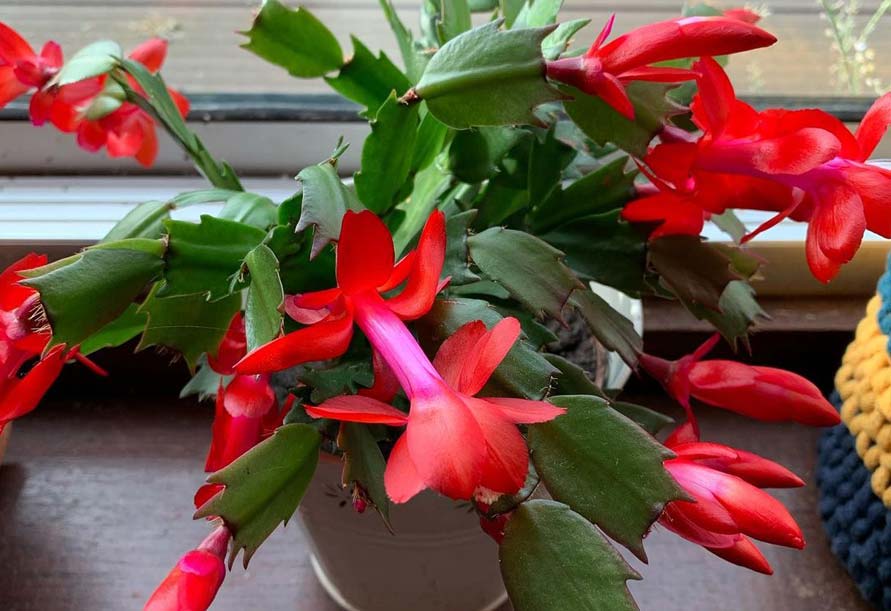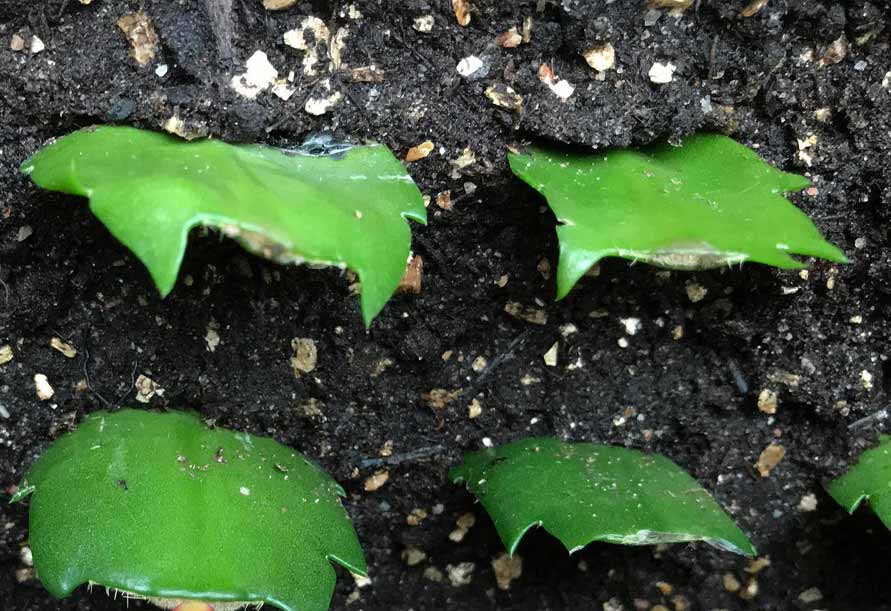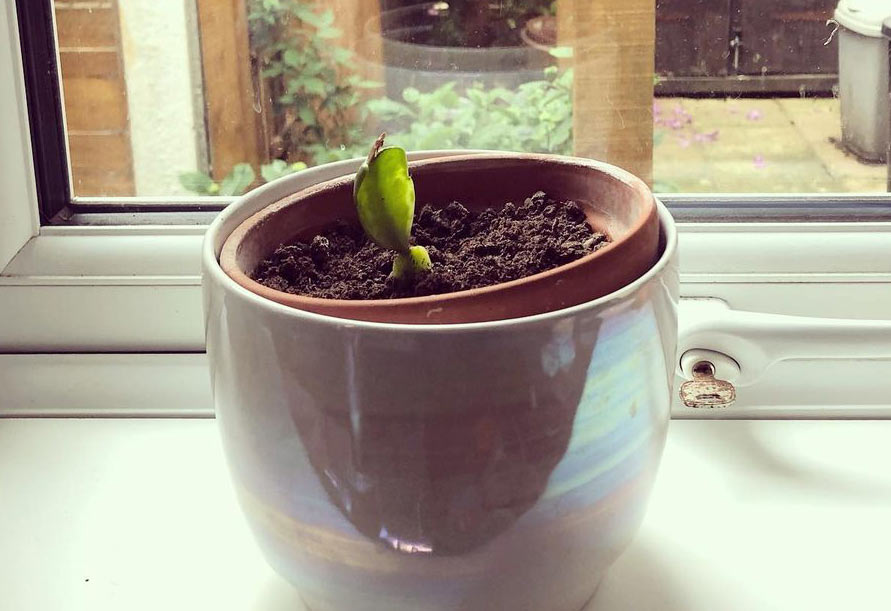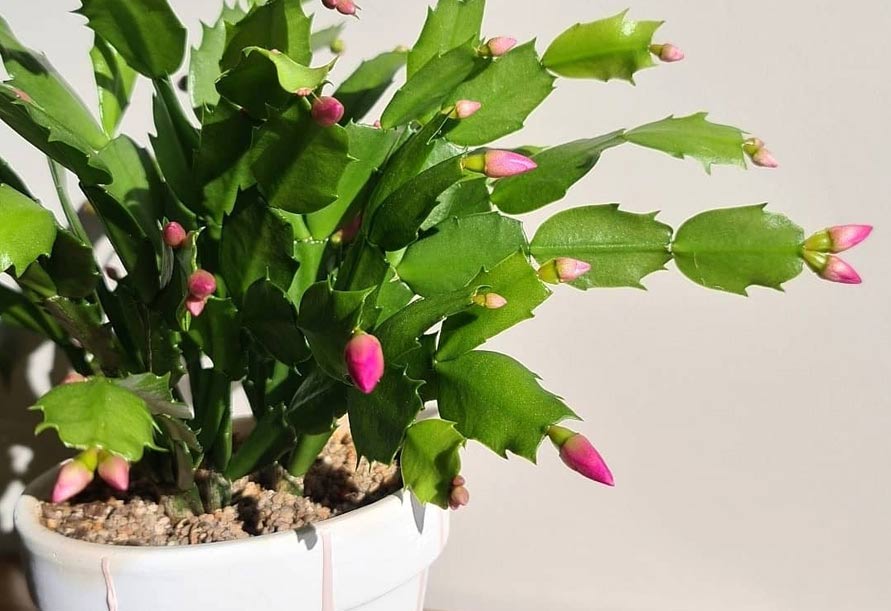Blog
Christmas Cactus

Schlumbergera x buckleyi or Christmas cactus is a plant native to the Americas, especially in Brazil and Colombia. This plant is mainly used in New Year parties, and its flowering is related to January. That’s why it’s popularly known as the Christmas Cactus. Christmas cactus has a fleshy texture and relatively tall stems that sometimes reach 30 meters in height. In this article, we want to introduce you to the maintenance methods of the Christmas cactus and its storage conditions. Please read on with Aloplant.
| Jan | Feb | Mar | Apr | May | Jun | Jul | Aug | Sep | Oct | Nov | Dec | |
|---|---|---|---|---|---|---|---|---|---|---|---|---|
| Sowing | ||||||||||||
| Planting | ||||||||||||
| Harvesting |
| J | F | M | A | M | J | J | A | S | O | N | D | |
|---|---|---|---|---|---|---|---|---|---|---|---|---|
| S | ||||||||||||
| P | ||||||||||||
| H |
| Botanical Name | Schlumbergera x buckleyi |
| Common Name | Christmas cactus, Thanksgiving cactus, crab cactus and holiday cactus |
| Plant Type | Succulent, cactus, epiphyte |
| Pet / Baby Safe | not toxic to pet and baby |
| Sun Exposure | Partial |
| Hardiness Zones | 9 to 11 |
| Bloom Time | Late fall, early winter |
| Soil Type | Moist, well-drained, loamy |
| Soil Amendments | text here |
| Types of Fertilizer | text here |
| Flower Color | Common colors are pink, red, magenta, white, or purple; less common are cream, salmon, peach, orange |
| Foliag Color | Blue, green |
| Plant Height | 6–12 in. tall, 12–24 in. wide |
| Native Area | Brazil |
how to care for christmas cactus?

The Christmas cactus belongs to the succulent family of houseplants and contains about 200 different species worldwide. One of the exciting beauties of this relatively large plant is its thin green stems. In some months of the year (usually spring), pink, red, purple, yellow, and white flowers can be seen on the tips of these stems. Christmas Flame with golden yellow flowers, Lavender Beauty purple and white, and White Christmas with snowy flowers are just a few of the countless species of this plant. Newer varieties usually have two colors and create beautiful color combinations.
christmas cactus light

Like other cacti and succulents, the Christmas cactus needs a lot of light but is away from direct sunlight. This plant changes the color of its leaves to red and yellow if it receives too much light. Christmas cactus prefers relative shade or filtered light; Of course, this plant can quickly get used to other light and environmental conditions, but it is better to keep it in an environment with indirect light. However, if you want to expose it to direct sunlight, do so only during the winter months, as too much sunlight in the spring and summer can cause the plant to turn yellow and pale.
christmas cactus temperature

If you want your cactus to have beautiful flowers and bloom, you must provide the required temperature conditions because this plant needs a short day and cool temperature to flower. This plant has a temperature of 7 to 8 degrees Celsius. It tolerates 10 to 15 degrees for flowering and long autumn nights. In general, the suitable temperature for this plant is between 10 and 20 degrees.
christmas cactus watering

Although the Christmas cactus is a cactus, its tropical background requires more regular watering than its counterparts. If the potting soil is too dry, the leaves will begin to wither and wrinkle. It should be noted that how often you water your plant depends on the environmental conditions under which your cactus is kept. For example, during a hot and sunny summer, you should water the plant almost twice a week. Or, for example, if you put a Christmas cactus next to a skylight in the winter, you may need to water it once a week.
To determine when your cactus soil is dry and needs watering, dip your finger about 5 cm into the ground. If you feel the soil is dry, water the plant. Otherwise, avoid watering the plant, as over-watering will kill your cactus.
christmas cactus soil

The soil used for the Christmas cactus pot is a combination of peat moss and perlite. This compound is commonly used for orchids, bromeliads, or other epiphytic plants.
christmas cactus propagation

Every year, propagation of the Christmas plant is usually done in May and June. Because the branches are growing during these months and their tips are without buds, you can easily separate a few strands of components and then plant these pieces in moist vermiculite. You will see that the branches take root after a while, and each of them gives you a new Christmas cactus.
fertilizer for christmas cactus

Christmas cactus needs fertilization for better growth. Therefore, during the spring and summer, strengthen your Christmas cactus once a month with a balanced fertilizer diluted in water and diluted to twice the recommended amount. For example, if you cut every 10 milliliters of fertilizer in one liter of water written on the package, you will double the amount of water, i.e., 2 liters. Be sure to stop fertilizing when you notice flower bud formation – usually in late summer or early fall.
christmas cactus leaves

Falling Christmas tree flowers can have several causes. One of the reasons for the lack of light is that if the light does not reach the plant enough, its flowers will fall off. The second reason for the flowers to fall is the high temperature. If the temperature reaches about 30 degrees Celsius, the flowers will drop. Another factor in the fall of flowers is the movement of the plant and temperature changes; to prevent this from happening, it is better to buy the plant before flowering. Other factors, such as excessive irrigation and nutrient deficiencies, can also cause flowers to shed.
christmas cactus bloom

As mentioned, this plant is relatively easy to maintain, but if you want to flower before the Christmas holidays, you should consider the following.
The Christmas cactus needs 8 to 10 weeks to germinate on cooler days and nights. Therefore, it is better to move it to the outside space in autumn but avoid exposing it to direct light. Be sure to move the plant back in before freezing.
Also, be aware that changes in light, temperature, and location may result in the loss of buds and flowers. Therefore, avoid placing this plant in windy spaces such as corridors and hot air vents.
christmas cactus diseases

One of the most common diseases you may encounter while keeping a Christmas cactus is drooping buds. This problem occurs when we experience sudden changes in temperature, light, humidity, or the amount of water that the plant receives. To prevent the buds from falling, the plant-soil should always be moist. The temperature should be between 18 and 24 degrees Celsius, fertilization should not be done from late summer to autumn, and the plant should be without direct light for about 14 hours during this period.
Conclusion
With its beautiful appearance, the Christmas cactus is always one of the attractive options for use in homes and apartments. This species is native to the Americas and is not considered poisonous for pets and infants. Christmas cactus has been used as a houseplant in many countries. You can breed and propagate them by knowing their maintenance systems, such as suitable ambient temperature, soil conditions, and suitable distances for irrigation. In this article, we wanted to give you reasonably comprehensive information on caring for the Christmas cactus. If you have any questions or concerns about this issue, please contact us in the comments section.
RELATED POSTS













